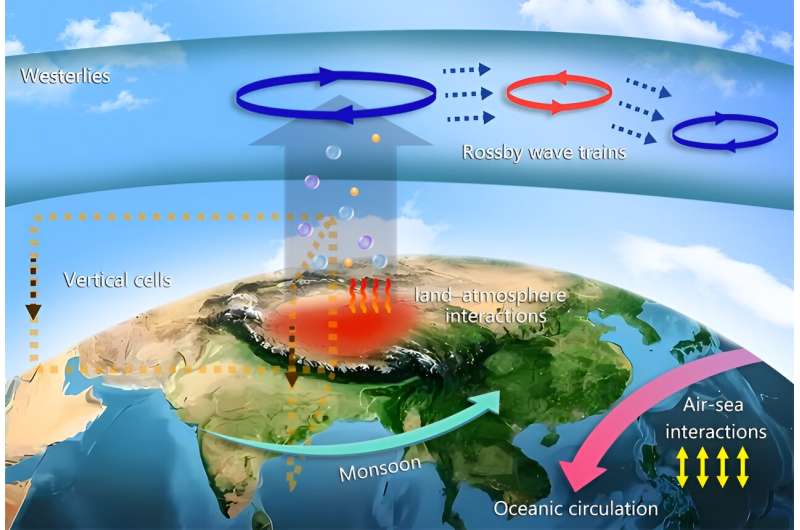Phys.org August 25, 2023
Researchers in China reviewed recent advances in research regarding land–atmosphere coupling processes over the Tibetan Plate (TP) and concluded that climate warming has caused glacier retreat, permafrost degradation, and a general increase in vegetation density, while climate wetting has led to a significant increase in the number of major lakes, primarily through increased precipitation. The TP drives surface pollutants to the upper troposphere in an Asian summer monsoon (ASM) anticyclone circulation before spreading to the lower stratosphere. The thermal forcing of the TP plays an essential role in the ASM. TP forcing can modulate hemispheric-scale atmospheric circulations across all seasons. The TP interacts with remote oceans through a forced atmospheric response and is substantially affected by the evolution of the Earth’s climate via promoting Atlantic meridional overturning circulation and eliminating Pacific meridional overturning circulation. The extensive influence of the TP is facilitated by its coupling with the ASM in the summer, whereas its winter influence on climate mainly occurs through Rossby waves. According to the researchers, the observed increasing trends of temperature and precipitation over the TP are projected to continue throughout the 21st century… read more. TECHNICAL ARTICLE

This schematic illustrates ways in which the Tibetan Plateau affects the global climate system. Credit: Jianping Huang